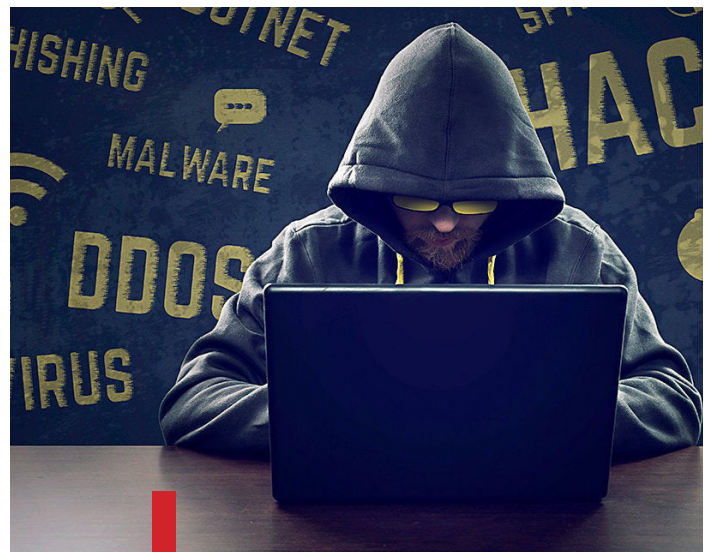| Internet hacking or the activities of hackers is nothing new, as we or someone we know has had their accounts hacked, and some are still being hacked as we speak. But can we help but stop being online? That is nearly impossible with the fast-paced technology developments around the globe, being online or conducting online activities has become almost infallible. Yes, being online, puts you and your data at risk, but what can we do? It has become a necessary evil, so to say. The good news is that it is not all that gloomy. There are ways you can minimize your online risks and create some sort of security for your online activities. The basic steps are 1. Use quick Google checks- Information on some sites which have had data breaches is always online. You can use Google or Vigilante, to know these sites. PW also maintains a searchable directory of reported hacks and data breaches. Once you notice that a website you use or used had been hacked, quickly change your password for that account. 2. Find out if your account has been hacked- There is a website called ‘Have I Been Pwned?’ you can check if your account has been pwned, or the data breached. When you enter your email or username, it pops out a list of breaches in which your account was found, listing the site, a summary of the incident, and the data that may have been compromised. Again, quickly change your password to ensure your account safety 3. Create strong passwords- Don’t make it easy for the hackers by having an easy password, no. ensure your every account has different and long passwords (12 characters minimum). Ensure there are 2 or 3 different types of character casing, (lowercase, uppercase, digits, and symbols), put in unpredictable places. Or you could combine some unrelated words and mix them in your password characters. Do everything to secure your online banking and email accounts as they contain valuable information. 4. Have and use a password manager- please use a password manager, instead of always clicking on the remember or secure password pop-ups. Managers such as LastPass or Dashlane help you keep track of your password, run security audits to notify you if your password is weak, or being used on multiple accounts. They also generate random strong passwords for you. 5. Enable two-factor authentication- this factor has saved many accounts from being hacked. Two-factor authentication is a security measure that makes it more difficult for hackers to have access to your accounts. This measure is now offered by many sides just to make your account more secure because it would require your username, password, and a validation code, which would be sent as an SMS to your phone. So even if a hacker has your password, they would need to have the code before they have access to your account, and if you are smart, then do not even give them that code, even if they demand it. 6. Avoid suspicious links in emails or texts- double check on every email you get just to be sure it is from a source you know or has the information you need. This is because phishers usually send links via email or text, which may look legitimate, but allows them access to your email and steal your information once it is clicked. Email attachments that contain malware are also popularly used by cyber fraudsters, so avoid all these scams by not clicking on the links or attachments. What you could do, is to open up the website on another tab, and check for information about the company in the email, or link and see if they match. Generally double- check on all links before you click on them regardless of if you know the source or not. 7. Use a VPN on your computer and your phone- encrypt your internet connections by using a VPN, as it makes you anonymous online. This would protect your personal information, and also make your browsing experience better because you would have fewer ad pop-ups, less tracking, and peace of mind which comes from knowing your online activities are secure. 8. Avoid public Wi-Fi or public computers- if you can, please only use the internet through your computer or mobile phone. Avoid using public computers, especially when they are accessible by other people who can use keyloggers or other malware on these computers. Kindly do your online banking or access other highly personal accounts on your protected home network, it is always safer that way. 9.Get a strong antivirus- A good antivirus raises the bar, secures your information, protects you from phishing attacks and threats like malware, ransomware, etc. You should have Antivirus on your PC, Mac, Android phone, etc. 10.Secure your router and WI-Fi- Whether a home user or a small business owner, you need to identify who and what is on your network, as unauthorized users could be trying to hack into your system. Change the admin password for your router and set your Wi-Fi password to something really strong that a hacker would not crack easily. 11.Ensure your computer and smartphone OS is up-to-date- Whenever a security update is released for your operating system, update it immediately. Consider this a basic tenet of information security. Please keep all of your computer and smartphone apps regularly updated |
11 WAYS TO PROTECT YOUR ACCOUNTS FROM HACKERS


